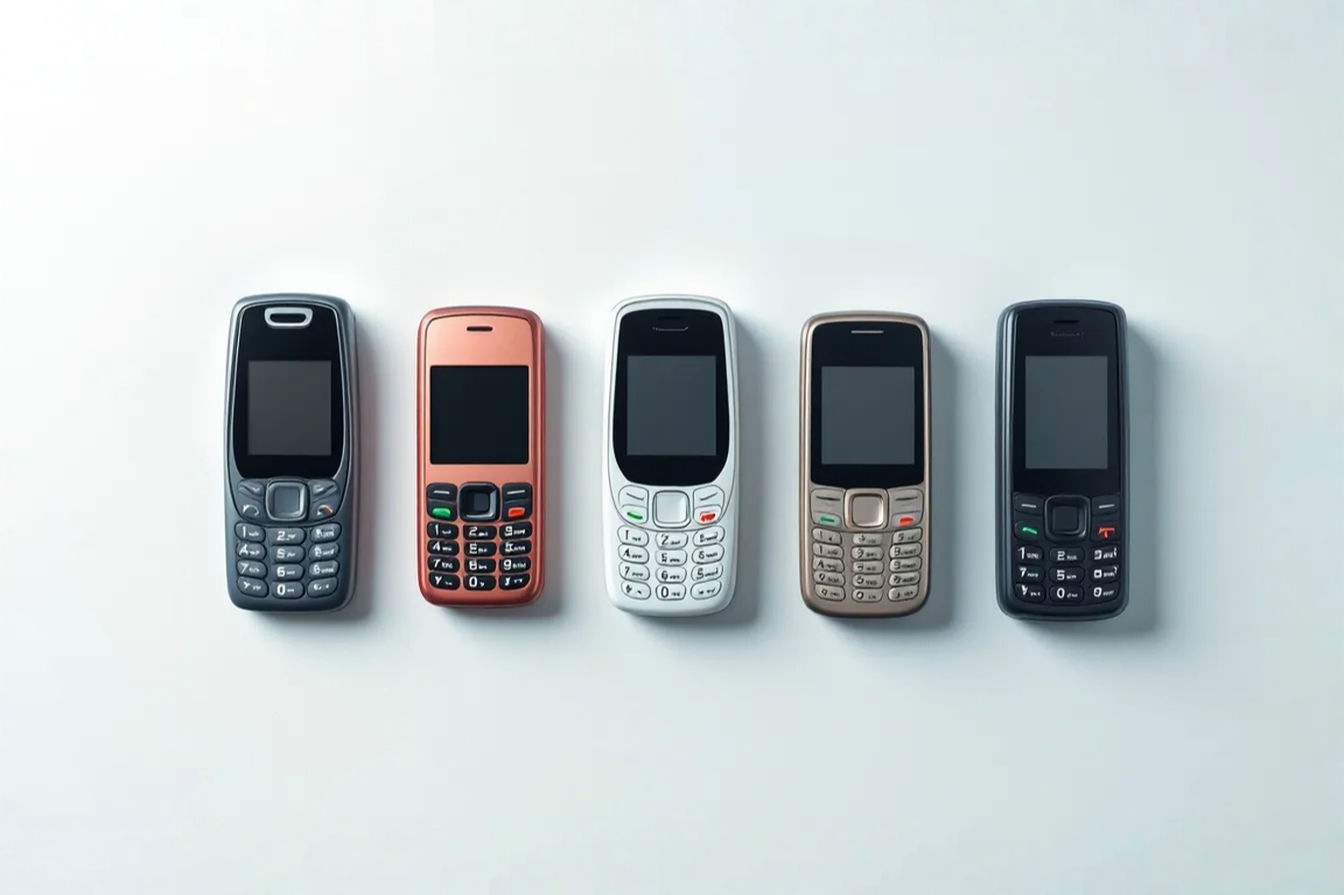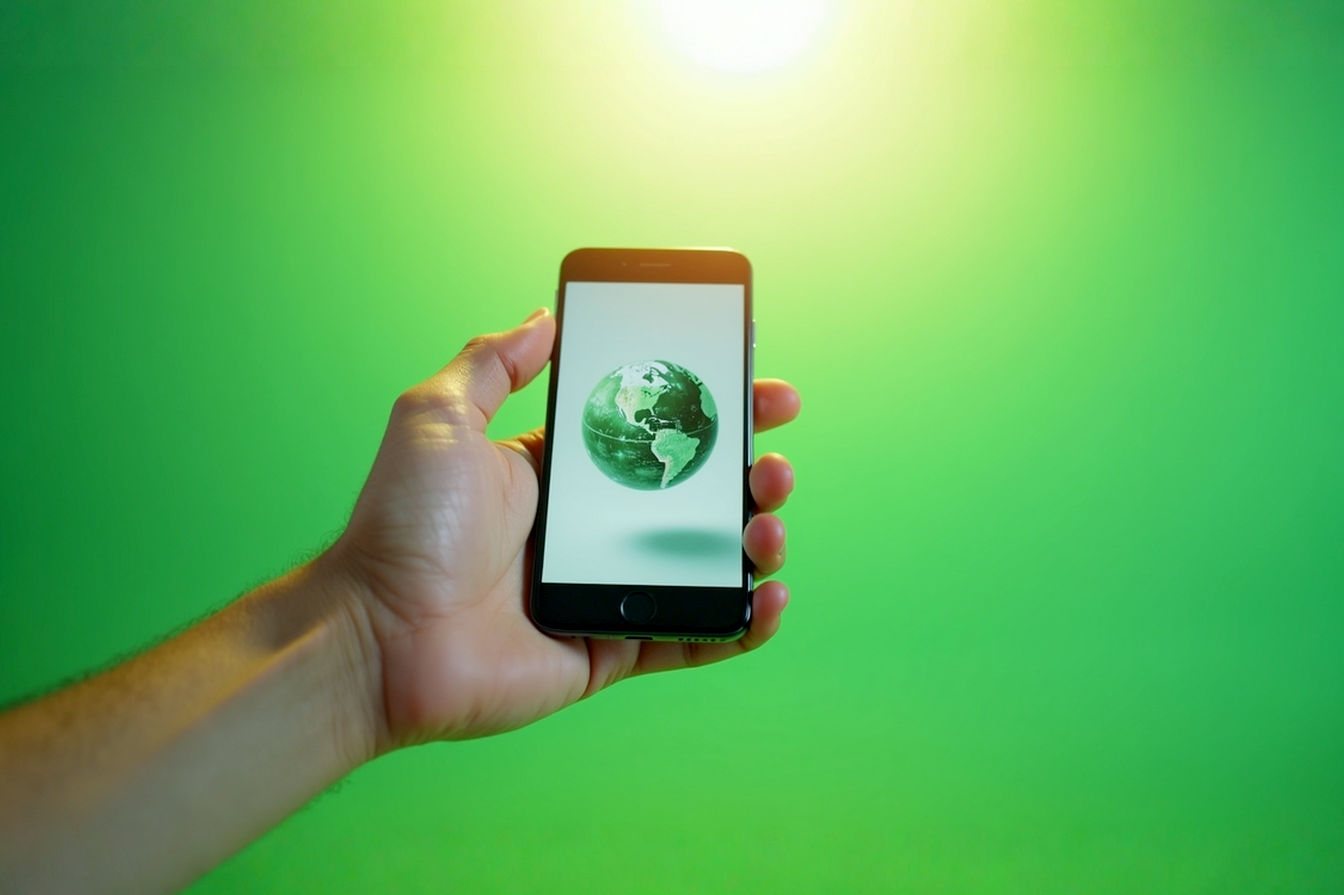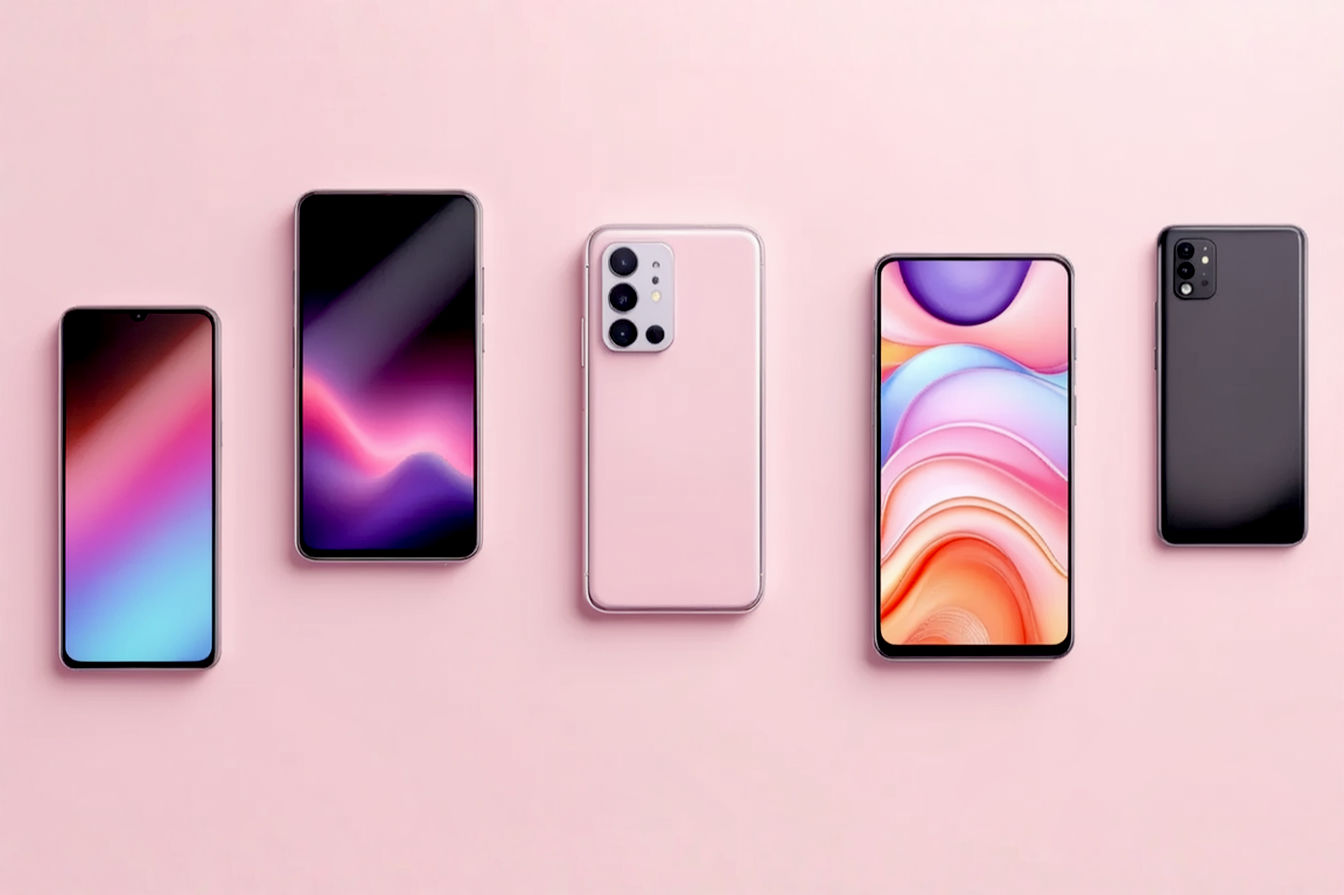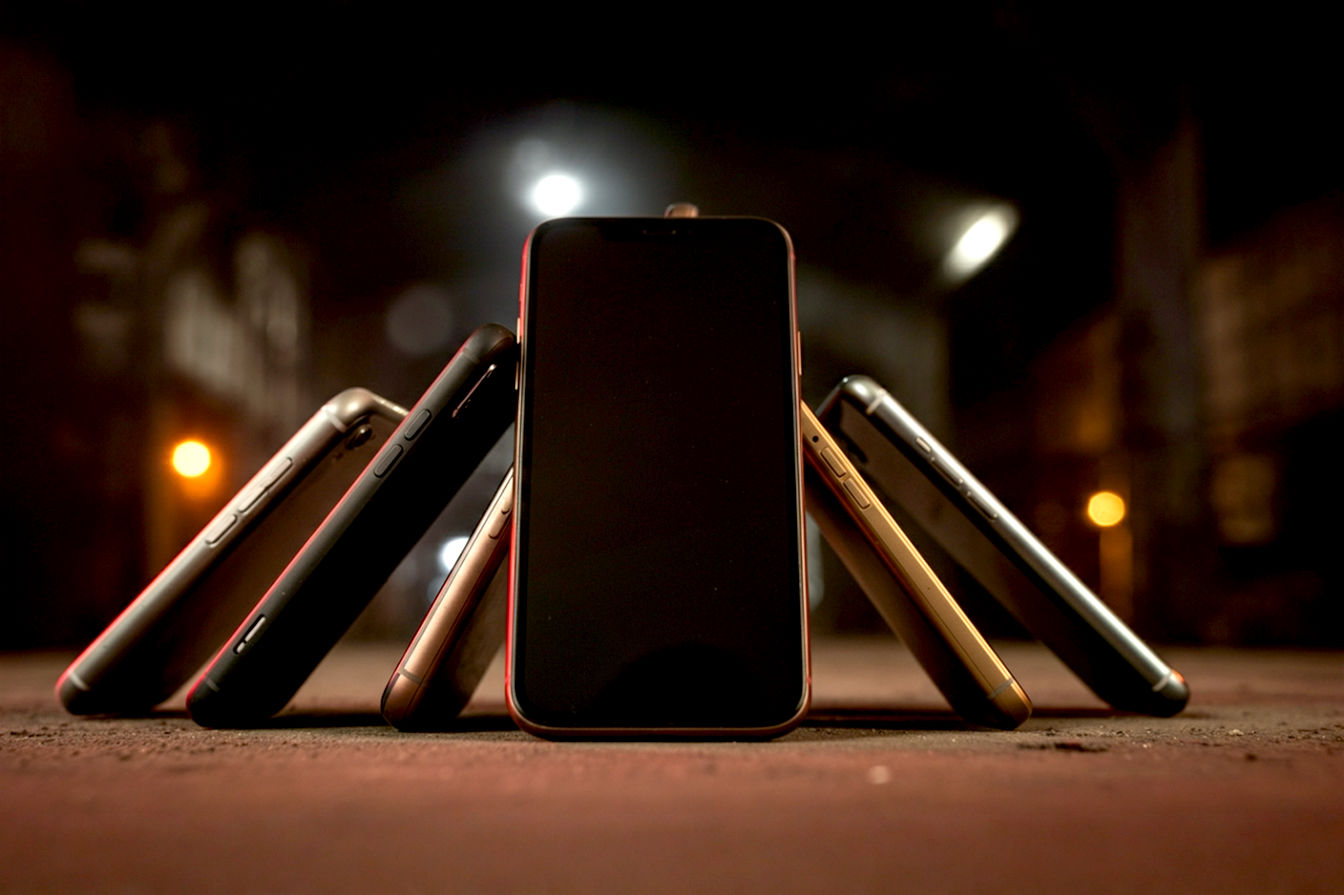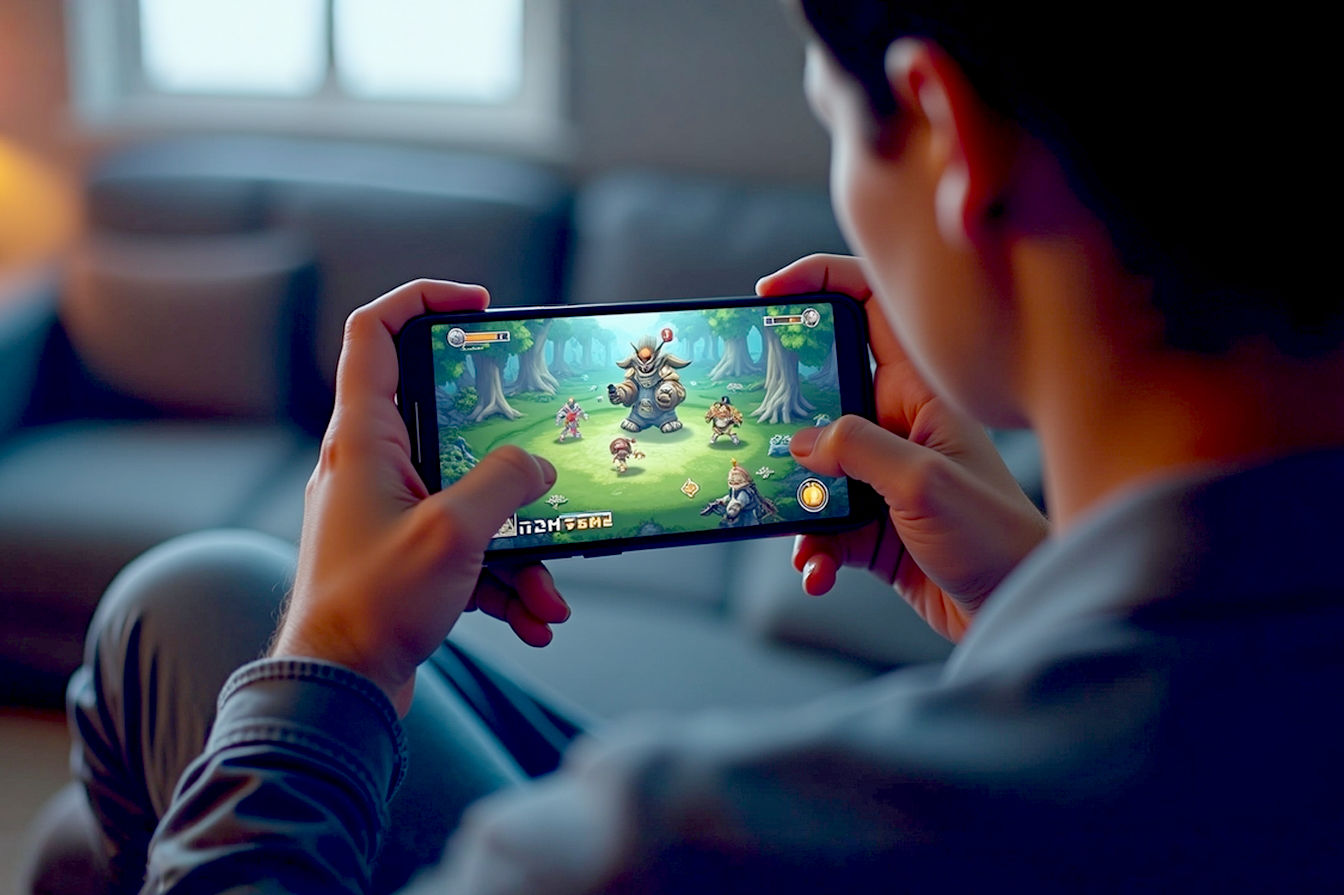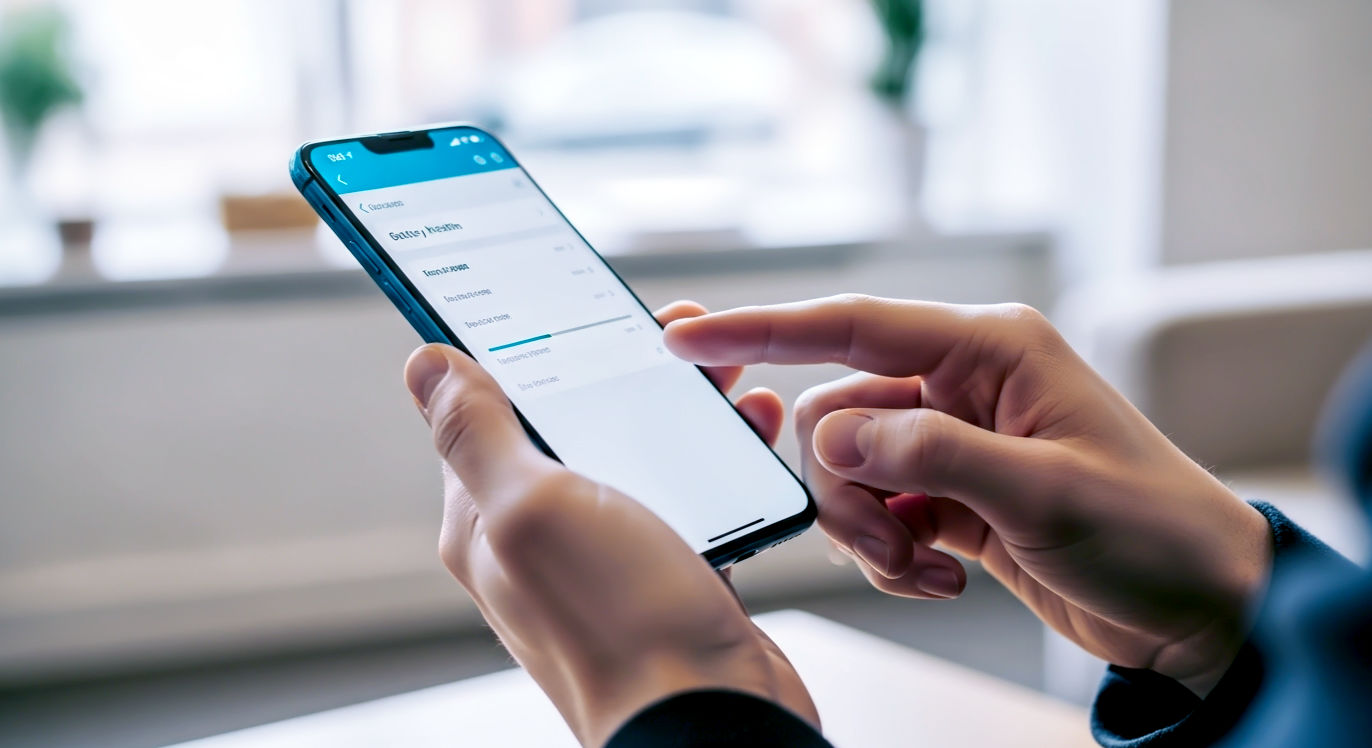This post may contain affiliate links. If you make a purchase through these links, we may earn a commission at no additional cost to you.
Take a look around your home. Chances are, you’ve got at least one old mobile phone tucked away in a drawer, maybe more. These devices, once central to our lives, often end up forgotten, gathering dust. But keeping old phones lying around isn’t just clutter; it’s a missed opportunity and contributes to a growing global problem: electronic waste, or e-waste.
Every year, millions of phones are replaced as newer models hit the market. While that shiny new device is exciting, the question of what to do with the old one is crucial. Simply tossing it in the bin is the worst possible option due to the harmful materials they contain and the valuable resources that could be recovered. This guide will walk you through the best options for your old mobile phone, explaining how to handle it responsibly, protect your personal information, and even potentially get some value out of it. We’ll cover everything from selling and donating to recycling and creative repurposing, making sure you understand the impact of your choice.
The First Crucial Step: Protecting Your Personal Data
Before you do anything else with an old phone – whether you plan to sell it, donate it, recycle it, or even just keep it as a backup – the absolute most critical step is to erase all your personal data. Your phone holds a staggering amount of sensitive information: contacts, photos, videos, messages, emails, banking app details, social media logins, passwords, and location history. Leaving this data on a phone you pass on is a major security risk and could lead to identity theft or privacy breaches.
Simply deleting files or removing accounts isn’t enough. When you delete something on a phone (or computer), the data isn’t immediately wiped clean. Instead, the phone marks that storage space as available, meaning new data can overwrite it. Until it’s overwritten, the old data can often be recovered using specialized software. Think of it like removing the labels from file folders but leaving the documents inside; someone could still open the folders and read what’s there.
To truly protect yourself, you need to perform a factory reset, which is designed to erase your data more thoroughly. However, even a standard factory reset might not be completely foolproof against advanced data recovery techniques. For maximum security, especially if the phone contains highly sensitive information, additional steps might be necessary.
Wiping Data on an iPhone
For iPhones, the process is relatively straightforward, but you need to follow the steps precisely. Apple has built-in features designed to make this secure.
First, make sure you’ve backed up any data you want to keep. You can use iCloud or a computer (Mac or PC with iTunes/Finder). Once your backup is complete, you need to sign out of all your accounts. This is vital because iPhones are tied to your Apple ID, and failing to sign out will leave the phone activation-locked, making it useless to the next person and still potentially linked to your account.
Go to Settings > [Your Name] > Sign Out. You’ll need to enter your Apple ID password to turn off Find My iPhone. Turning off Find My iPhone is a crucial security measure that prevents anyone else from activating or using the device.
Next, you perform the factory reset. Go to Settings > General > Transfer or Reset iPhone. Tap “Erase All Content and Settings.” The phone will ask for your passcode and potentially your Apple ID password again to confirm. This process will erase all data, settings, and installed apps from the device.
Apple’s process for “Erase All Content and Settings” on modern iPhones (running recent iOS versions) is generally considered secure. When you initiate this process, the phone encrypts the data using a unique key. The erase function then simply deletes this encryption key, rendering the encrypted data effectively unreadable and irrecoverable without the key. This method is very fast and highly secure for modern devices with hardware encryption.
Wiping Data on an Android Phone
Wiping data on an Android phone also involves a factory reset, but there’s an extra layer of security you should consider, particularly on older devices.
Like iPhones, start by backing up your data using Google Drive, another cloud service, or a computer. Then, remove all accounts linked to the device. Go to Settings > Accounts (or Users & Accounts) and remove your Google account and any other accounts (like Samsung, email accounts, social media). Removing the Google account is especially important because of Factory Reset Protection (FRP), which can lock the device to your Google account if not removed before resetting.
Before performing the factory reset, for older Android devices (generally those running Android 5.0 Lollipop or newer), you should encrypt the phone’s data first. Many newer Android phones are encrypted by default, but older ones might not be. Encryption scrambles the data on the device so it can only be read with a specific key. By encrypting the phone before a factory reset, you ensure that even if fragments of the old data remain after the reset, they will be encrypted and virtually impossible to access without the key, which is destroyed during the reset.
To check if your phone is encrypted or to encrypt it, go to Settings > Security (or Security & Location) > Encryption & Credentials. If it’s not encrypted, you’ll see an option to encrypt the phone. Note that encrypting can take some time and requires the phone to be charged and plugged in.
Once encrypted (or if it was already encrypted), perform the factory reset. Go to Settings > System > Reset options > Erase all data (factory reset). You’ll likely need to enter your PIN, pattern, or password. Confirm your choice, and the phone will erase all data and settings.
After the reset, regardless of whether it’s an iPhone or Android, the phone will boot up as if it were brand new, asking you to set it up. This is a good sign that the reset was successful. For maximum peace of mind, especially if you didn’t encrypt an older Android phone beforehand, some experts recommend loading some unimportant dummy data onto the phone after the reset (like large video files) and then performing the factory reset again. This second reset helps overwrite any potentially remaining fragments of your original data.
Finally, remember to physically remove your SIM card and any external SD cards. These can also store personal information like contacts and photos.
Option 1: Selling Your Old Phone
If your old phone is still in decent working condition, selling it is a great way to recoup some of its original cost and put a little cash back in your pocket. The value you’ll get depends heavily on the phone’s model, age, condition, and market demand. Newer flagship phones (like recent iPhones or Samsung Galaxy models) tend to hold their value better than older or budget models. A phone in pristine condition with its original box and accessories will fetch a higher price than one with scratches, dents, or a cracked screen.
There are several popular avenues for selling old phones, each with its own pros and cons.
Online Marketplaces
Platforms like eBay, Swappa, and Facebook Marketplace connect you directly with potential buyers. This often allows you to get the highest possible price for your phone because you’re cutting out the middleman. You have control over the listing, the price, and the negotiation.
However, selling directly requires more effort. You need to take good photos of the phone, write a detailed description, research pricing for similar devices, communicate with interested buyers, and handle the shipping (if selling online) or arrange a safe meeting place (if selling locally). There’s also a risk of dealing with scammers or buyers who might claim issues after receiving the phone. Using platforms with buyer/seller protection and clear policies can mitigate some of these risks. For instance, eBay offers seller protection, and Swappa specifically focuses on selling used tech, often requiring verification.
When listing, be honest about the phone’s condition. Note any cosmetic flaws or functional issues. Specify if the phone is unlocked or tied to a specific carrier. An unlocked phone is generally more valuable as it can be used on any compatible network. Include the phone’s IMEI or serial number (but be cautious about sharing it widely before a sale) and storage capacity.
Carrier and Manufacturer Trade-In Programs
Most major mobile carriers (like Verizon, AT&T, T-Mobile) and phone manufacturers (Apple, Samsung, Google) offer trade-in programs. When you purchase a new phone, they’ll offer you a credit or discount for trading in your old one.
The primary advantage here is convenience. The process is usually simple: you get an estimated value online, send in your old phone (often with a prepaid shipping label), and receive the credit towards your new purchase or sometimes as a gift card. It’s a hassle-free way to upgrade and get rid of your old device simultaneously.
The downside is that the trade-in value offered is often lower than what you could get by selling it yourself on an online marketplace. These companies need to make a profit, so they offer a wholesale or slightly below-market value. However, they sometimes run promotions that offer enhanced trade-in values, especially when launching new phone models. It’s always worth checking their current offers.
Buyback Websites
Several websites specialize in buying used electronics directly from consumers. Companies like Gazelle, Decluttr, and EcoATM (kiosks found in retail locations) provide instant quotes based on the phone’s model, carrier, and condition.
The process is very similar to carrier trade-ins in terms of convenience. You get a quote, ship the phone (usually for free), and get paid via PayPal, check, or direct deposit once they receive and inspect the device. EcoATM kiosks offer instant cash but typically provide lower values than online buyback sites or selling directly.
Buyback websites are more convenient than online marketplaces but generally offer less money than selling it yourself. They are a good middle ground if you want a quick, guaranteed sale without the effort of listing and dealing with individual buyers. Be sure to read reviews of buyback sites before using them to ensure they are reputable and have fair inspection processes. Some sites might significantly lower their initial quote after receiving the phone if they assess the condition differently than you did.
Option 2: Donating Your Old Phone
If getting cash isn’t your priority, donating your old phone can be an incredibly impactful way to help others and support worthwhile causes. Many charities and non-profit organizations accept mobile phone donations. They often refurbish the working phones and provide them to individuals or groups who lack access to technology, or they sell the phones/components to fund their programs.
Donating gives your phone a second life with someone who truly needs it, bridging the digital divide for vulnerable populations. It also supports the charity’s mission, whether it’s aiding victims of domestic violence, supporting troops overseas, helping low-income families, or funding environmental initiatives.
Who Accepts Phone Donations?
A wide range of organizations accept mobile phone donations. Some focus specifically on providing phones for communication and safety:
- Domestic Violence Shelters: Providing phones (often with prepaid minutes) allows victims to stay in contact with support networks, emergency services, and potential employers while maintaining independence and safety. Organizations like the National Coalition Against Domestic Violence (NCADV) often partner with phone recycling companies to receive donations or the funds generated from them.
- Support for Troops and Veterans: Organizations like Cell Phones for Soldiers collect phones to provide free communication services to active-duty military personnel and veterans. They use the proceeds from recycling phones to buy international calling cards or provide emergency phones.
- Senior Citizen Programs: Access to a mobile phone can be vital for seniors, providing a way to stay connected with family, access telehealth services, and call for help in emergencies.
- Low-Income Families and Job Seekers: Having a phone is almost essential for applying for jobs, attending virtual interviews, and managing daily life. Donating can provide this crucial tool to those who can’t afford it.
Other charities accept phones as a way to raise funds for their broader work. They partner with electronics recyclers who assess the phones. Working phones might be refurbished and resold, while non-working phones are recycled for their materials. The proceeds go directly to the charity. Check with your favorite local or national charities to see if they have an electronics donation program or a partnership with a recycling company.
How Donation Programs Work
When you donate a phone, the process varies depending on the organization. Some charities handle the phones directly, especially if they are providing them for immediate use (like emergency phones for domestic violence victims). More commonly, charities partner with specialized electronics recycling or refurbishment companies.
You’ll typically send your phone to the charity or their designated partner (often with a prepaid shipping label provided by the charity). The receiving organization will then assess the phone’s condition. If it’s functional and relatively modern, it might be refurbished. This involves cleaning, minor repairs, and potentially updating the software. Crucially, reputable donation programs will perform a professional data wipe to ensure your information is completely erased before the phone is passed on or resold. They use software and processes that go beyond a simple factory reset to meet data security standards.
If the phone is too old, damaged, or not cost-effective to refurbish, it will be sent for recycling. The materials recovered from recycling are then sold, and the proceeds are given to the charity.
When choosing a charity to donate to, look for one that is transparent about what they do with the phones and how they handle data security. Many will explicitly state that they perform certified data wiping. This gives you peace of mind knowing your personal information is protected while your donation does good.
Option 3: Recycling Your Old Phone
When a phone is too old, too damaged, or simply has no resale or donation value for reuse, recycling is the most environmentally responsible option. Electronic waste is a massive and growing problem worldwide. Discarded electronics contain valuable materials that can be recovered and reused, but they also contain hazardous substances that can harm the environment and human health if not disposed of properly.
Throwing a phone in the regular trash means it will likely end up in a landfill. In landfills, the toxic chemicals inside phones can leach into the soil and groundwater, contaminating ecosystems and potentially entering the food chain. Incinerating e-waste releases pollutants into the air. Proper recycling prevents this contamination and conserves valuable resources.
Harmful Materials in Mobile Phones
Mobile phones are complex devices containing a mix of plastics, ceramics, and various metals, some of which are toxic. Key hazardous materials include:
- Lead: Found in solder and circuit boards. It’s a neurotoxin that can affect the nervous system, especially in children.
- Mercury: Used in some older phone batteries and displays. It’s also a potent neurotoxin.
- Cadmium: Found in older batteries (NiCd) and some components. It’s a carcinogen and can damage the kidneys and bones.
- Chromium: Used in metal plating. Some forms are toxic and carcinogenic.
- Brominated Flame Retardants (BFRs): Added to plastics and circuit boards to reduce flammability. These are persistent organic pollutants that can accumulate in the environment and living organisms, potentially affecting reproductive and nervous systems.
- Beryllium: A lightweight metal used in connectors and springs. It can cause chronic beryllium disease, a serious lung condition, if inhaled as dust.
Proper recycling facilities are equipped to safely handle and process these materials, preventing them from entering the environment.
Valuable Materials Recovered Through Recycling
Beyond the hazardous materials, phones also contain valuable resources that can be extracted and reused in new products. This reduces the need for mining new raw materials, which saves energy, reduces greenhouse gas emissions, and minimizes habitat destruction.
Materials commonly recovered include:
- Precious Metals: Gold, silver, palladium, and platinum are used in small amounts in circuit boards and connectors due to their conductivity. While the amount in a single phone is tiny, the cumulative amount from millions of recycled phones is significant. For example, recycling one million mobile phones can recover substantial amounts of gold, silver, copper, and palladium.
- Copper: Used extensively in wiring and circuit boards.
- Aluminum: Found in the casing of many phones.
- Plastics: Used in the casing, buttons, and other components. Different types of plastics can be separated and recycled.
- Glass: Used in screens and camera lenses.
The Phone Recycling Process
The recycling process for mobile phones is a sophisticated operation involving several stages at specialized facilities:
- Collection and Sorting: Phones are collected through various programs (drop-off points at electronics stores, local recycling centers, mail-back programs). At the recycling facility, they are initially sorted to separate them from other types of e-waste. Working phones might be diverted for potential refurbishment and reuse.
- Shredding: Devices designated for material recovery are typically shredded into smaller pieces, often ranging from postage-stamp size down to a few millimeters. This step breaks down the phone’s structure and makes it easier to separate materials.
- Material Separation: This is the most complex part. Various techniques are used to separate different materials:
- Magnetic Separation: Large magnets are used to pull out ferrous metals like steel.
- Eddy Current Separation: This technique uses changing magnetic fields to repel and separate non-ferrous metals like aluminum and copper.
- Density Separation: Materials are placed in liquids of different densities, allowing components to sink or float based on their composition, separating plastics from metals, for example.
- Optical Sorting: Automated systems use cameras and air jets to identify and separate different types of plastics based on color and composition.
- Further Processing (Smelting, Chemical Baths): The separated materials, particularly the mixed metals, undergo further refinement. This can involve smelting (melting down metals) or using chemical processes (like acid baths) to dissolve and extract precious metals from circuit boards. These processes must be carefully controlled to prevent the release of toxins.
- Preparation for Reuse: The recovered materials are processed into raw materials (like plastic pellets or metal ingots) that can be sold to manufacturers to be used in the production of new electronics or other products.
Reputable e-waste recycling facilities follow strict environmental regulations and safety protocols to protect workers and the environment from hazardous materials. Look for recyclers certified by recognized standards like R2 (Responsible Recycling) or e-Stewards, which ensure environmentally and socially responsible practices.
Option 4: Repurposing Your Old Phone
Even if your old phone can’t be sold or donated for primary use, or if you’d prefer to keep it out of the waste stream entirely, you can give it a creative second life by repurposing it. Modern smartphones are powerful mini-computers with high-quality screens, cameras, and sensors. Even without cellular service, they can still function over Wi-Fi, opening up a world of possibilities.
Repurposing is a great way to reduce e-waste by extending the useful life of the device and can save you money on buying dedicated gadgets.
Here are some popular ways to repurpose an old smartphone:
- Dedicated Media Player: Load it up with music, podcasts, audiobooks, and videos. Use it offline or connect to Wi-Fi for streaming. This saves battery life and storage space on your main phone.
- Home Security Camera or Baby Monitor: Install a security camera app (many free options are available) and use the phone’s camera to monitor a room, your pets, or your baby. You can often view the feed remotely from your current phone or computer via Wi-Fi.
- Universal Remote Control: Many smart home devices and streaming boxes (like smart TVs, Roku, Apple TV) have companion apps that turn your phone into a remote. Set up your old phone with all your smart home apps in one place.
- E-Reader: Download Kindle, Google Play Books, or other reading apps. The phone’s screen might be smaller than a dedicated e-reader, but it’s perfectly usable for reading books, articles, or comics, especially if you adjust screen brightness and text size.
- Dedicated Gaming Device: Turn it into a portable gaming console. Download games from the app store, or use it for cloud gaming services like Xbox Cloud Gaming or GeForce Now over Wi-Fi. You can also use emulators to play retro games.
- Backup Phone: Keep it charged and ready with a basic prepaid SIM card or just for Wi-Fi use in case your main phone is lost, stolen, or damaged. Even without a SIM, all phones can still call emergency services (like 911 in the US) if they can connect to any cellular network.
- Digital Photo Frame: Install a digital photo frame app and set it up to display a slideshow of your favorite pictures while it’s charging.
- Dash Cam: Mount it in your car and use a dash cam app to record your drives. This can be useful for capturing evidence in case of an accident.
- Second Screen for Your Computer: Apps like Spacedesk can turn your old phone or tablet into an extra display for your Windows computer, extending your screen real estate for increased productivity.
- Portable Storage Device: Connect it to your computer via USB. Even without a screen or working features, the internal storage might still be accessible, allowing you to use it like a large USB drive.
When repurposing, remember to perform a factory reset first (as discussed earlier) to remove your personal data, even if you’re keeping the phone yourself. You can then set it up with a new or generic account specifically for its new purpose.
The Bigger Picture: Environmental and Social Impact
Dealing with old mobile phones responsibly goes beyond just decluttering or getting a few bucks back. It’s a small but significant part of addressing the global challenge of electronic waste. E-waste is the fastest-growing waste stream in the world, driven by rapid technological advancements and shorter product lifecycles.
The sheer volume is staggering. In 2021, the world generated 57.4 million metric tons of e-waste, and this number is projected to grow significantly. Mobile phones, while small individually, contribute substantially due to their high turnover rate. Unfortunately, only a fraction of this e-waste is formally collected and properly recycled worldwide – estimates often hover around 17-20%. The vast majority ends up in landfills, is informally recycled in unsafe conditions (often in developing countries), or sits unused in homes.
The environmental consequences of improper e-waste disposal are severe. Beyond the leaching of heavy metals and toxins into soil and water, the informal recycling of electronics often involves burning components to recover precious metals, releasing toxic fumes into the air. This pollutes local environments and poses serious health risks to the people, including children, who often perform this dangerous work.
By choosing to sell, donate, or formally recycle your old phone, you are directly contributing to a more sustainable system. Selling or donating for reuse extends the product’s lifespan, delaying it from becoming waste. Recycling ensures that valuable materials are recovered, reducing the need for environmentally damaging mining operations, and that hazardous materials are handled safely in controlled environments.
This aligns with the principles of a circular economy, a model that aims to keep resources in use for as long as possible, extracting maximum value from them whilst in use, then recovering and regenerating products and materials at the end of each service life. Instead of a linear “take-make-dispose” model, a circular economy for electronics focuses on designing products for longevity, repairability, reuse, and effective recycling. Your decision about your old phone is a small but tangible action supporting this larger shift towards sustainability.
Furthermore, donating phones supports social causes, providing essential connectivity to those who need it most, empowering them with access to information, communication, and opportunities in an increasingly digital world.
Preparing Your Phone for Any Option: Detailed Steps
Regardless of whether you plan to sell, donate, recycle, or repurpose your old phone, taking the time to prepare it properly is essential. This involves protecting your data and making the phone ready for its next phase.
Here’s a detailed checklist:
- Back Up Your Data: This is the first and most important step. Ensure all your photos, videos, contacts, messages, app data, and any other important files are saved elsewhere. Use cloud services (iCloud, Google Drive, Dropbox, etc.) or transfer everything to a computer or external hard drive. Double-check that the backup is complete and accessible.
- Remove SIM Card: Your SIM card contains information linking the phone to your mobile carrier account and can store contacts. Physically remove the SIM card from its tray. Keep it as a backup, transfer it to a new phone, or dispose of it securely (cutting it in half is a good method).
- Remove SD Card (Android): If your Android phone has an external SD card slot, remove the card. This card can store photos, videos, and other files. Back up its contents if needed, and then keep or dispose of the card.
- Sign Out of All Accounts:
- Apple (iPhone): Sign out of your Apple ID/iCloud. Go to Settings > [Your Name] > Sign Out. Turn off Find My iPhone.
- Android: Remove your Google account and any other linked accounts (Samsung account, email accounts, social media apps). Go to Settings > Accounts or Users & Accounts.
- Sign out of individual apps, especially banking, social media, and shopping apps.
- Unpair Bluetooth Devices: Disconnect the phone from any paired Bluetooth devices like smartwatches, headphones, or car systems.
- Remove Mobile Wallets and Payment Information: Delete any credit or debit cards stored in mobile wallet apps (Apple Pay, Google Pay, etc.).
- Encrypt the Device (Older Androids): As discussed earlier, if you have an older Android phone that isn’t encrypted by default, encrypt it before the factory reset for an extra layer of data security.
- Perform a Factory Reset: This is the core data wiping step.
- iPhone: Settings > General > Transfer or Reset iPhone > Erase All Content and Settings.
- Android: Settings > System > Reset options > Erase all data (factory reset).
- Follow the on-screen prompts, entering passcodes or passwords when requested.
- Confirm Reset: After the reset, the phone should boot up to the initial setup screen, as if it were new. This confirms the reset was successful.
- Physical Cleaning: If you’re selling or donating the phone, give it a good clean. Use a microfiber cloth to wipe down the screen and body. You can slightly dampen the cloth with water or an electronics cleaner, but avoid getting moisture into ports. Clean out any dust or grime from ports and speaker grilles carefully.
- Gather Accessories: If selling or donating, include original accessories like the charger, cable, headphones, and the original box if you still have it. Including these can increase the phone’s value or desirability.
Taking these steps ensures your personal data is protected and the phone is ready for its next life, whether that’s with a new owner, supporting a charitable cause, being safely recycled, or serving a new purpose in your home.
Choosing the Right Option for You
With several viable options available, how do you decide what to do with your old mobile phone? Consider these factors:
- Phone’s Condition and Age: Is the phone relatively new and in good working order? Selling or trading it in will likely yield the most value. Is it older but still functional? Donating might be a great option. Is it broken, very old, or not working? Recycling is probably the best path.
- Your Goal: Are you looking to get some money back? Selling or trading in is the way to go. Do you want to help others or support a cause? Donation is a fulfilling choice. Are you primarily concerned with environmental responsibility? Recycling or repurposing are excellent options. Do you need a backup device or a dedicated gadget for a specific task? Repurposing is ideal.
- Convenience: Selling directly requires the most effort. Trade-in and buyback programs offer more convenience for selling. Many donation programs provide prepaid shipping, making it easy to give. Recycling often involves dropping off at a local center or store.
- Data Security Concerns: While all reputable options involve data wiping, performing your own thorough data erasure before handing over the device gives you the most control and peace of mind. Ensure any program you use (donation or recycling) explicitly states their data destruction policies and certifications.
There’s no single “right” answer for everyone. The best option depends on your individual circumstances, the state of your phone, and what you hope to achieve. The most important thing is to choose a responsible path rather than letting the phone end up in a landfill.
Conclusion
Those old mobile phones tucked away in drawers represent more than just outdated technology; they are a tangible part of the e-waste challenge and a potential source of valuable resources or aid for others. Ignoring them contributes to environmental pollution and the depletion of finite materials.
By taking action, you can make a positive impact. Whether you choose to sell your phone to give it a new owner, donate it to support a worthy cause and bridge the digital divide, recycle it responsibly to recover precious materials and prevent toxic contamination, or creatively repurpose it for a new use in your home, you are making a conscious decision for a more sustainable future.
Remember that the first and most critical step, regardless of the path you choose, is to completely and securely erase all your personal data from the device. Take the time to back up what you need and perform a thorough factory reset, considering encryption for older devices.
Don’t let your old phone become another statistic in the growing e-waste pile. Explore the options available, choose the one that best fits your situation, and give your old device a responsible and meaningful end to its first life. Your actions, multiplied by others, can make a real difference in protecting our planet and helping our communities.

